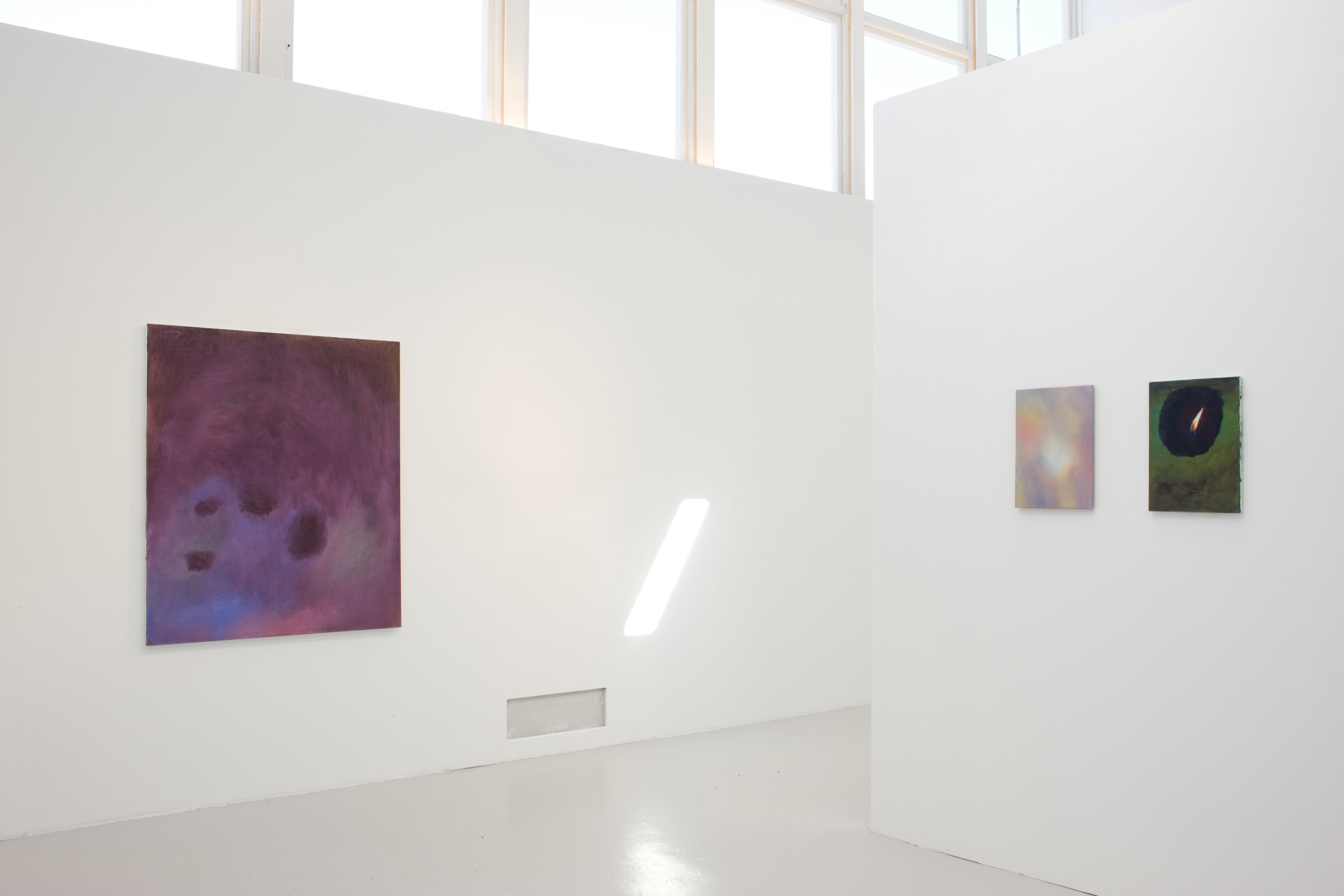

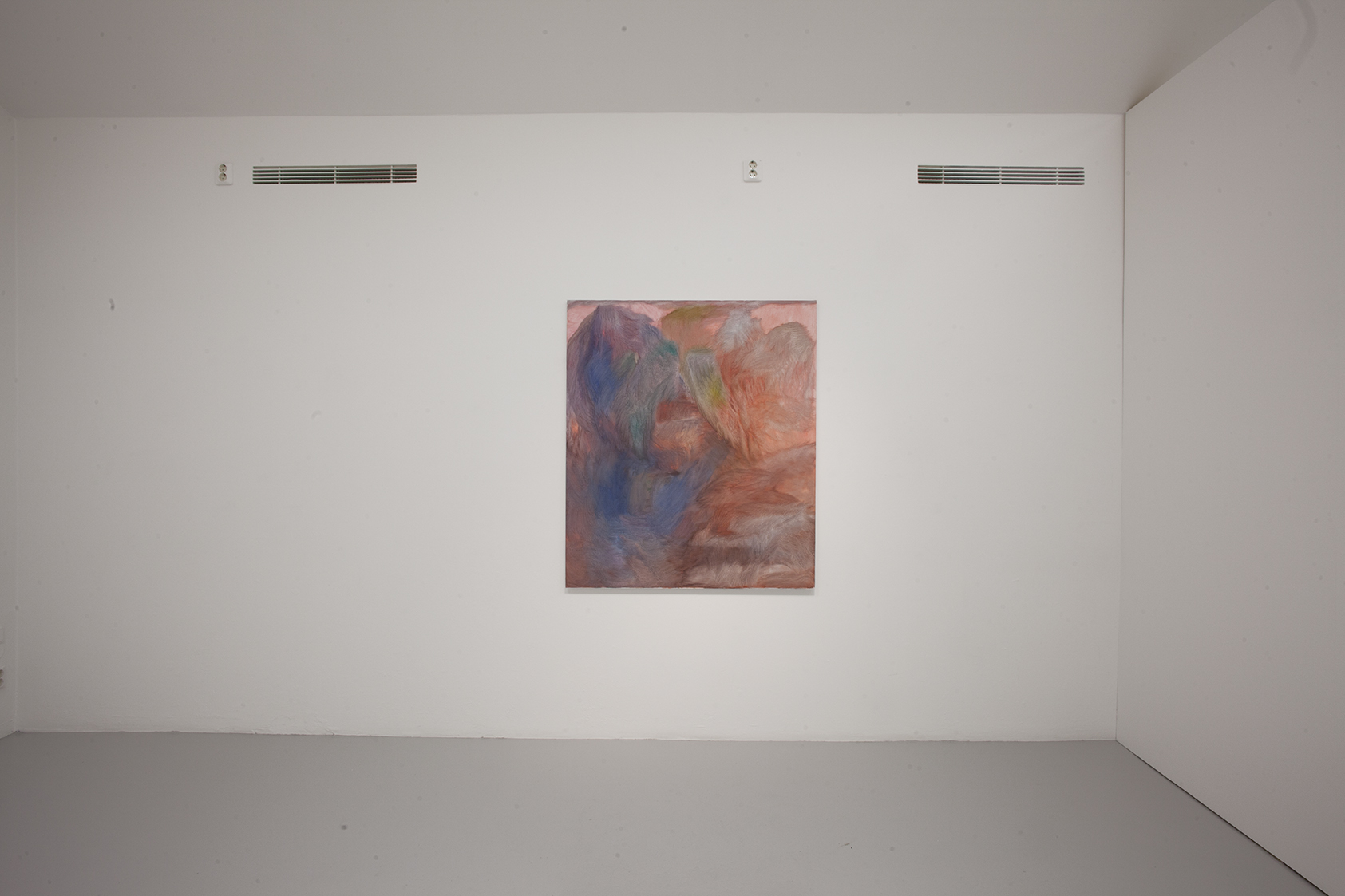
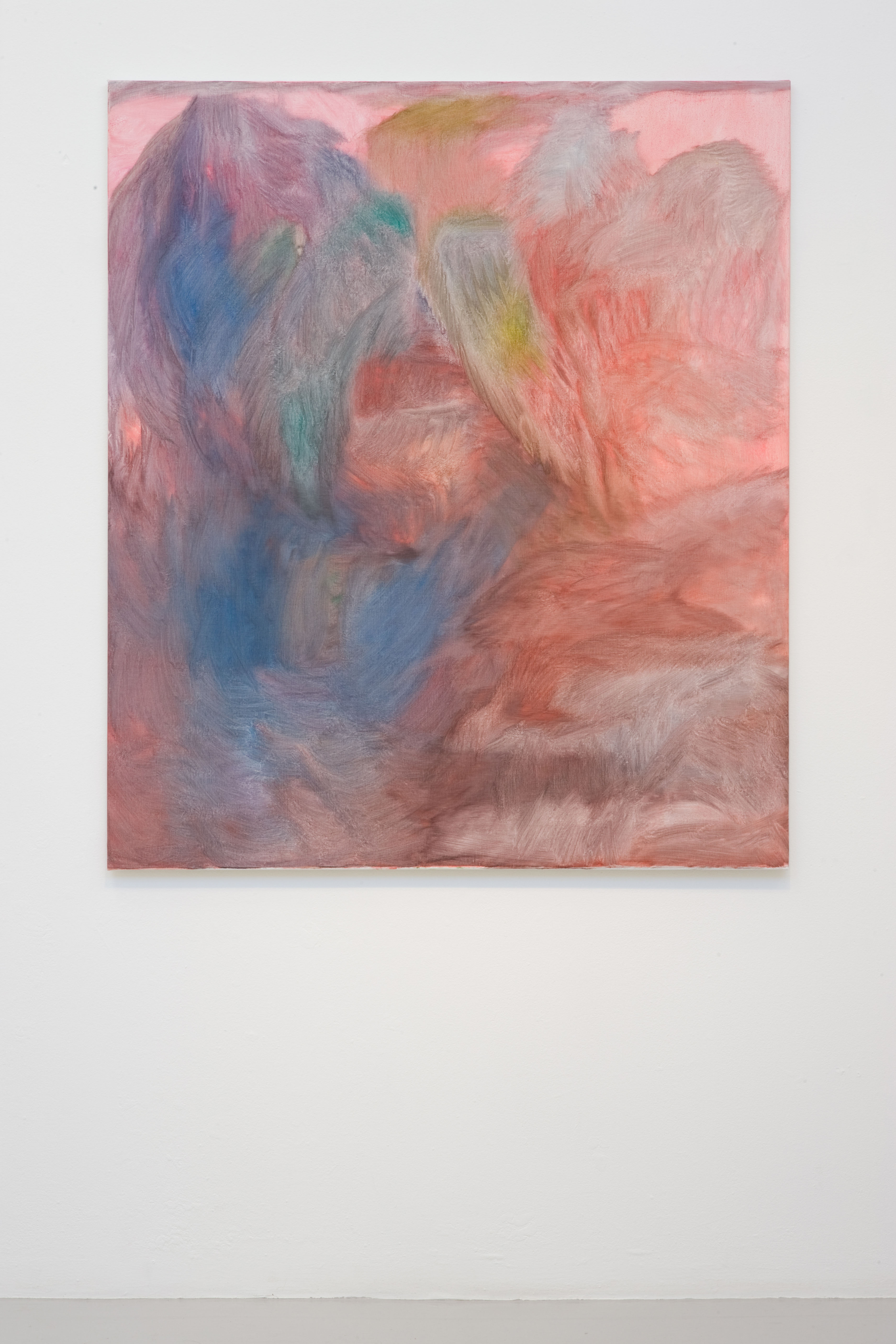
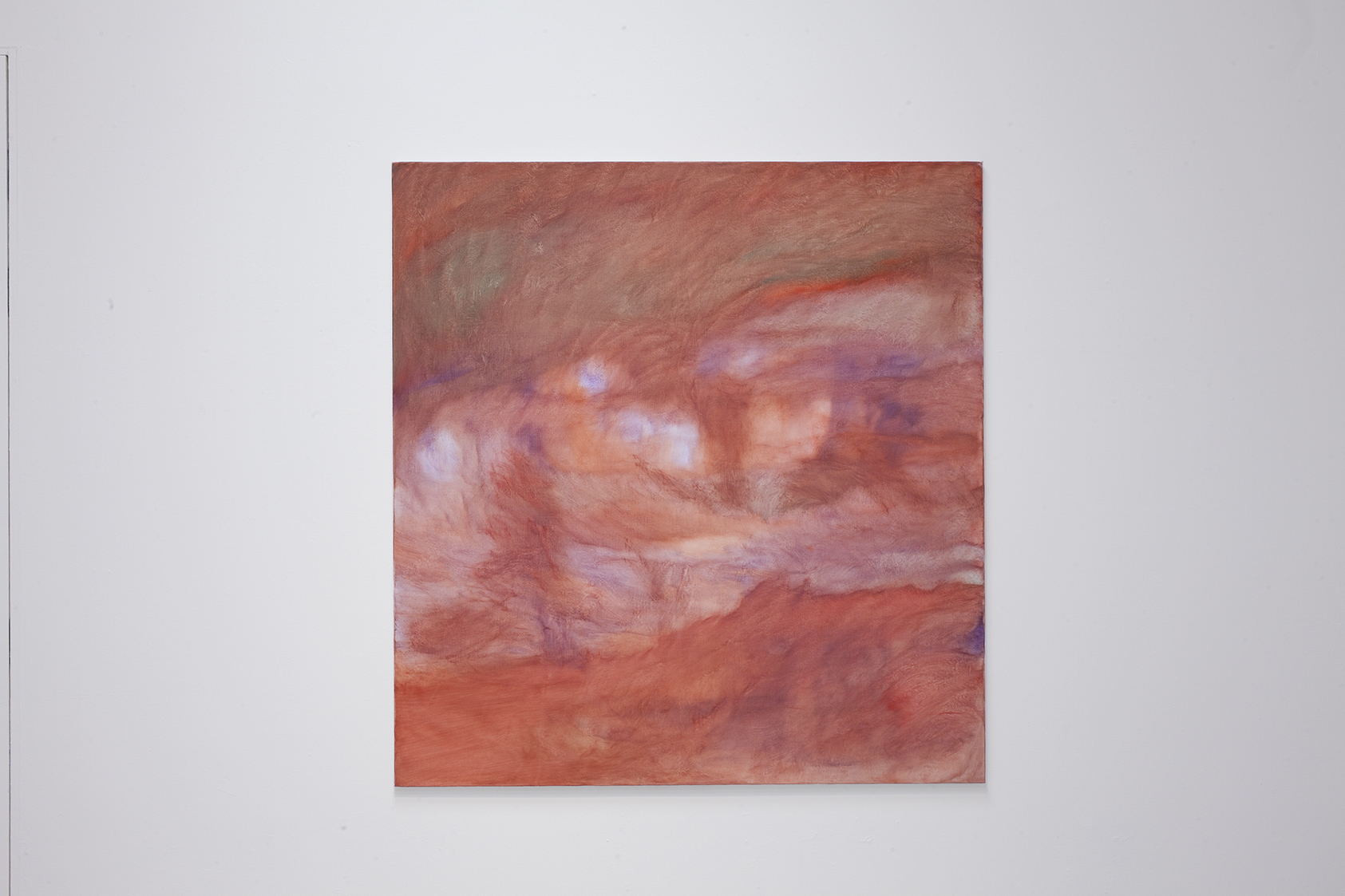

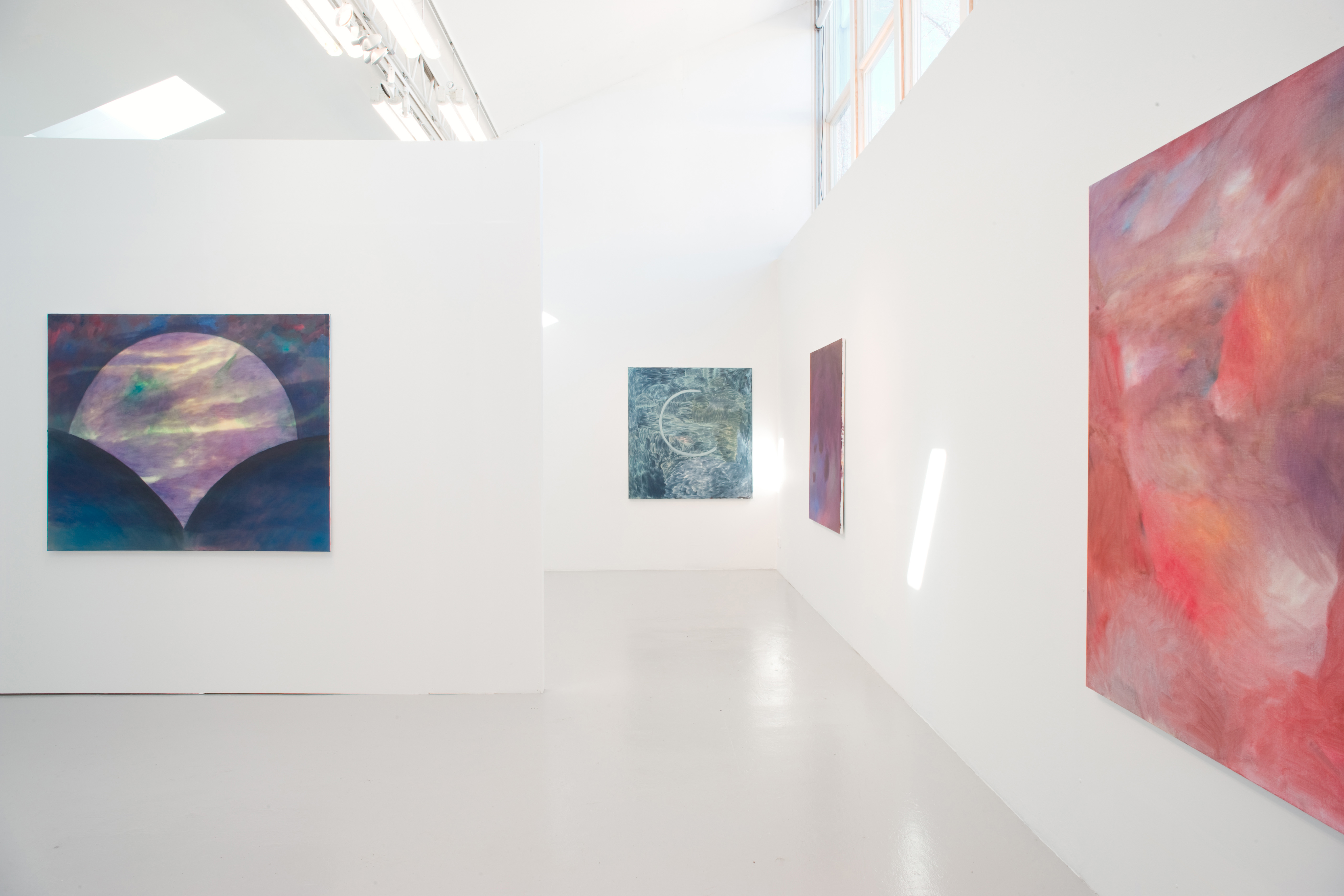
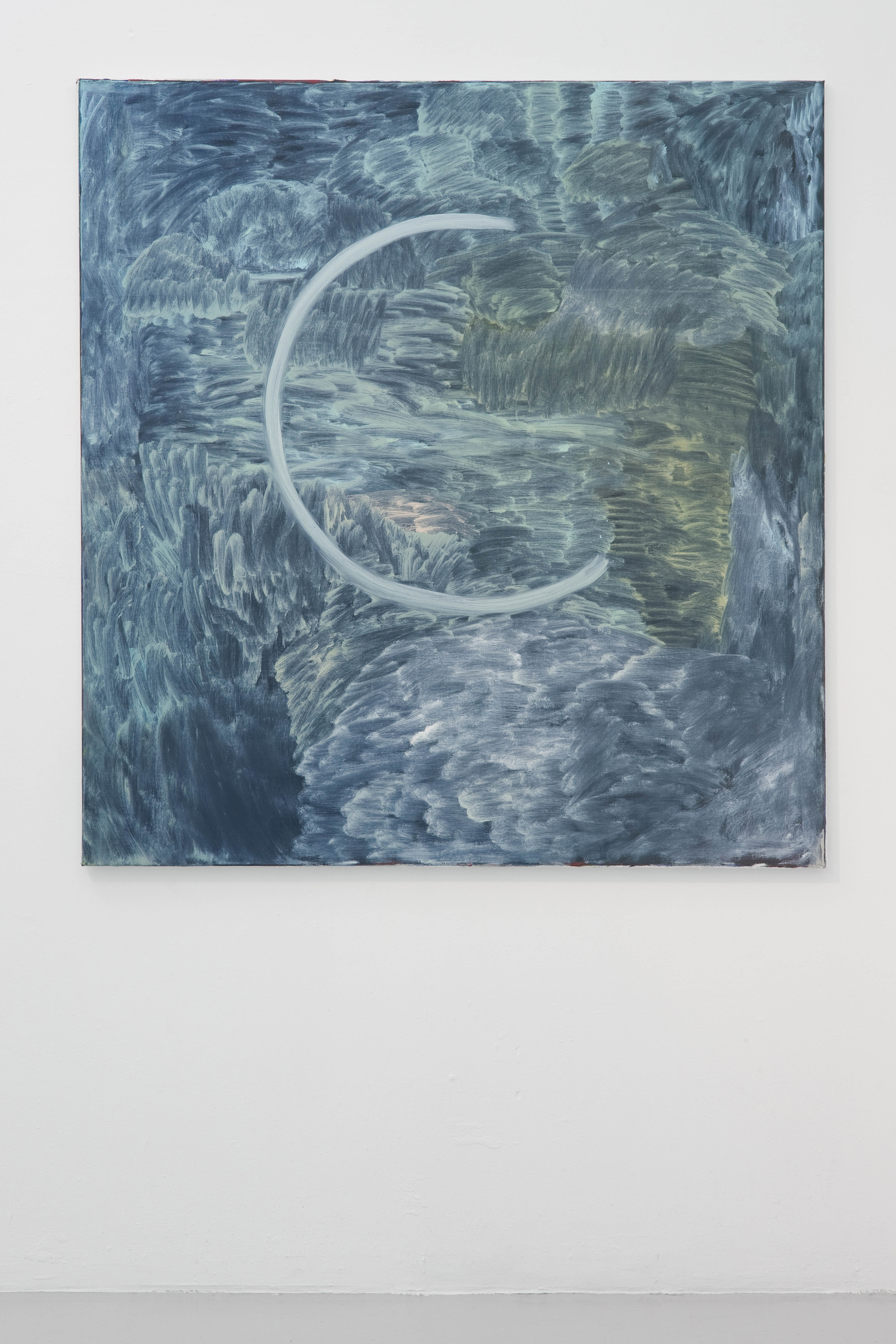








Productive distrust
If painting is a solution, what exactly is the problem? Even the most worldly-wise of painters, once you get them behind closed studio doors, will maintain that the subject of their work is painting itself. And even absolute, ideological realists will admit that although images do not need to deal with images, the verity of a painting must be measured in terms of its authenticity in the medium of painting; that the sporting experience in the studio is the struggle with internal issues of pictorial organization. The scale of chastisement or admiration from one’s colleagues is also a consequence of technical or conceptual action (although conceptual consistency might also be understood as a technical act). Heads or tails. Painterly precision or kitsch.
Measured against this personal scale of consistency as the final criterion in a painter’s internal self-reflection, Clara Gesang-Gottowt’s experiment over the past five years has been quite astonishing. This is not, of course, because the 27-year-old artist is inconsistent or spurns technical clarity. The astonishing thing is that she does not view painting as either the primary problem or a particularly plausible solution; instead she has been interested, for a remarkably long time, in possible alternatives to her own paintings.
This is sure to irritate art historians. It is surely prerequisite to the task of any decent custodian to see an artistic oeuvre as the consequence of a driving series of decisions. There are no alternatives to a van Eyck, even when you hang it opposite to a Masaccio. The historian devoted to his profession will find it an extremely disturbing notion that a finished work – and even a successful, self-contained series of works – should be understood, as if in a scientific experiment, as a direct challenge to imagine experimentally quite the opposite. What happens here to the public’s faith in art’s inner necessity, what becomes of the collector’s speculative hopes that the artist’s growing maturity will lead to an increase in value?
But Clara Gesang-Gottowt does not define consistency as a search for the perfect image. Her painting is not just about individual works; to an equal degree, it concerns the spaces between them. The problem is not the painting but the comfortable nature of our faith in the created art object or even more, the paintings’ tendency to trigger this admiring faith. It is a matter of the questionable self-confidence of artefacts that could turn into their opposite, after all, with just another line of yellow here, a thinning of the paint there, or the outlining of a figure at the centre of an abstract area. It is all about the illusion of completion, which Clara Gesang-Gottowt distrusts deeply because she sees all painterly processes as reversible.
The painter has taken this productive distrust into her works. Since 2007 she has been painting succinct, economical arrangements on the basis of photographic originals initially, later with the help of geometric patterns. It is not the composition or the subject of these arrangements that is significant but their disturbing aspect: the element that appears untimely. On the one hand, the acrylic paintings on wood based on photographs are realized stoically in standard formats and run the gamut of romantic landscapes and biographical recollections; on the other hand, among the figures our attention is brought compellingly to focus on coloured shapes, abstract mists of colour or almost monochrome filling in certain areas. The paintings’ subjects are chased over the picture carriers like circus ponies, swiftly painted, cleverly trained, but fanning scepticism regarding the belief that the presence of a mere handful of ciphers can ensure the integrity of a painting with every fresh circuit of the arena. The recipe for painting works, says Clara Gesang-Gottowt, and in variation after variation it highlights the antagonism between the pictorial elements. On the one hand, she demonstrates that everything can be made into a painting. But if this is so, what justifies the belief in one particular, specific image?
It seems as if the painter is amused at the way we see associations with a match after a golden yellow mist has been added round a tiny, head-shaped, black blob in the middle of an abstract field, no longer calling the picture ground with its regularly sketched circles and a darkened circle in the upper half of the painting “abstraction”, but perhaps now “candle”: compliantly registering the rededication of the gesture just because it fulfils suitable preconditions of a painting. But Gesang-Gottowt does not rely on irony; she is more of a researcher into the principles of her own work, who – picture after picture – triggers processes in order to take them to the end of the experiment. She paints until the possibilities for action are automatically restricted. She plays chess with the painting until there are no further conceivable moves, and in this process she sees mistakes, disruptions, deviations and losses of control as respectable moves made by the opponent, without which painting would make about as much sense as a monochrome game of chess.
And so for Clara Gesang-Gottowt the inner experiment painting is neither a strategy of problem-solving nor a stylistic exercise but a pact with uncertainty. The public’s confused efforts to decipher her paintings, the uncertainty of the criteria for a successful painting, the debatable links between one picture and another, the risks of the image concepts are not sources of danger to be avoided in this oeuvre; they are characteristics of the scope for action that the artist wishes to share with her viewers. The painter believes that painting should remain a tightrope walk between controllability and uncontrollability, even though one may occasionally have to practise failure with technical finesse as a consequence. This should not be misunderstood. Clara Gesang-Gottowt rejects many paintings that we never get to see. Games that stagnate at an early stage don’t make for attractive chess, after all. But the more obvious the risk becomes in a game, the more tangibly a painting reminds us that it could be different, the less stereotypically we understand art as a self-contained object, the more open the process becomes for the recipient, and the more meaningful painting appears to the painter.
However, in her spare time the artist plays pétanque rather than chess. This is a variation of the game of boule – one that calls for more precision. In this game it is very important to read the state of the ground and to study one’s opponent. And, by the way, the French refer to the placing of the balls as “pointing”.
Gerrit Gholke
Critic and curator